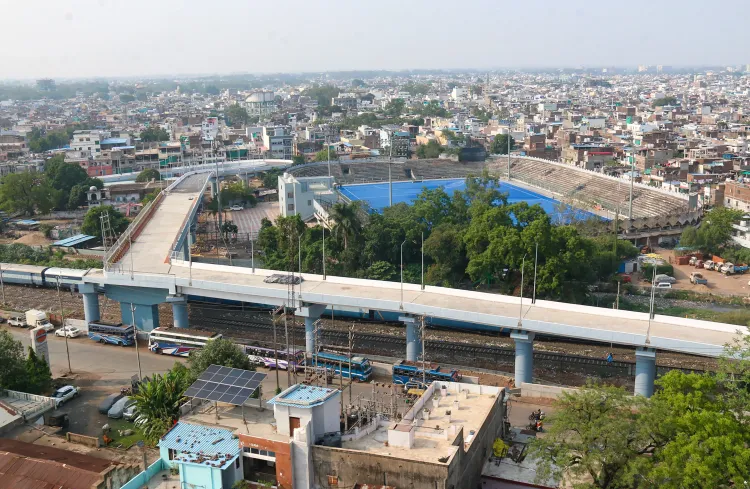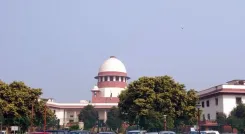Is Bhopal’s Meme-Famous '90-Degree' Bridge Getting a Redesign?

Synopsis
Key Takeaways
- Redesign of the Aishbagh bridge aims to enhance safety.
- Widening the bridge by three feet is part of the improvements.
- Removal of the central divider to facilitate better flow.
- Public scrutiny has led to accountability for the original design failures.
- Experts warn against high-speed crossings due to safety concerns.
Bhopal, June 18 (NationPress) The infamous railway overpass in the Aishbagh locality of Bhopal, recognized for its sharp 90-degree angle, is slated for a redesign amid widespread criticism on social media and rising safety concerns.
Sources from the Public Works Department (PWD) have confirmed that the bridge, which has gained notoriety as a meme sensation, will undergo a reengineering process in collaboration with the Indian Railways.
“An official announcement will follow shortly,” the sources stated.
While the structure itself is not considered structurally compromised, officials are keen to address its hazardous turning radius to mitigate the risk of vehicles skidding or tumbling. Situated in a densely populated area, the bridge was designed to alleviate traffic congestion and minimize rail crossing delays. However, its awkward configuration has ignited serious worries regarding vehicular safety.
Drivers have reported feeling bewildered and uneasy when navigating the abrupt turn, with experts cautioning that the current design presents a significant danger, particularly under poor visibility conditions or at high speeds.
In light of extensive backlash, the railway department has sanctioned a redesign of the overpass. This approval includes widening the bridge by an additional three feet.
As part of the updated design, the existing footpath will be removed, and the central divider will be eliminated to facilitate a more practical alignment and enhance the turning radius. These modifications aim to reshape the bridge for safer vehicle passage.
In response to public outcry, PWD Minister Rakesh Singh has mandated a formal investigation by the National Highways Authority of India (NHAI).
The agency's findings recommend that vehicles should not exceed speeds of 35 to 40 km/h while traversing the structure. Exceeding these speeds could lead to accidents, especially due to the absence of proper banking or gradual curvature.
Authorities have opted to adjust the bridge’s design without dismantling the entire structure.
At the same time, accountability measures are being pursued against those responsible for the flawed original design, which neglected fundamental traffic engineering principles like proper turning radius, adequate signage, and visibility standards.
The situation surrounding the Aishbagh bridge underscores the larger issue of infrastructure planning amid urban constraints, where space limitations frequently lead to compromises that pose real threats.
As the redesign process commences, civic agencies are being encouraged to prioritize user safety and engineering integrity over rapid implementation. Public scrutiny appears to be driving a much-needed correction in approach.







